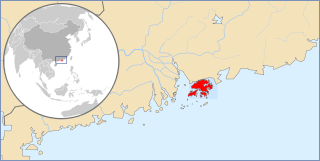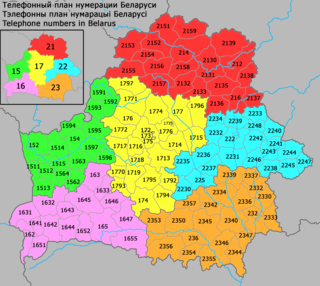Related Research Articles
A telephone numbering plan is a type of numbering scheme used in telecommunication to assign telephone numbers to subscriber telephones or other telephony endpoints. Telephone numbers are the addresses of participants in a telephone network, reachable by a system of destination code routing. Telephone numbering plans are defined in each of the administrative regions of the public switched telephone network (PSTN) and in private telephone networks.

In the United Kingdom, telephone numbers are administered by the Office of Communications (Ofcom). For this purpose, Ofcom established a telephone numbering plan, known as the National Telephone Numbering Plan, which is the system for assigning telephone numbers to subscriber stations.

The Australian telephone numbering plan governs the allocation of telephone numbers in Australia. It has changed many times, the most recent major reorganisation by the Australian Communications and Media Authority taking place between 1994 and 1998.

The French telephone numbering plan is used in Metropolitan France, French overseas departments and some overseas collectivities.
In Argentina, area codes are two, three, or four digits long. Local customer numbers are six to eight figures long. The total number of digits is ten, for example, phone number (11) 1234-5678 for Buenos Aires is made up of a 2-digit area code number and an 8-digit subscriber's number, while (383) 123-4567 would be an example of a Catamarca number.

Telephone numbers in Hong Kong are mostly eight-digit. Fixed land line numbers start with 2 or 3, mobile (cellular) phone numbers with 5, 6, 7 or 9, pager numbers with 7 and forwarding service with 8. Since the end of 1989, there have been no area codes within Hong Kong.

Numbers on the Irish telephone numbering plan are regulated and assigned to operators by ComReg.

Telephone numbers in Singapore, also known as the National Numbering Plan, are regulated by the Info-communications Media Development Authority (IMDA). Due to the small geographical size of Singapore, there are no area or trunk codes; all numbers belong to one numbering area, and thus come in the same 8-digit format. Numbers are categorised based on the first digit, thus providing ten possible categories, of which six are currently in use and the remaining four reserved for future usage.
Widespread UK telephone code misconceptions, in particular brought on by the Big Number Change in 2000, have been reported by regulator Ofcom since publication of a report it commissioned in 2004.

The dialling plan for mobile networks and new landline operators is closed; all subscriber numbers must be dialled in full. For landline numbers starting with 02, the dialling plan used to be open; the trunk digit and area code could be omitted if the caller was in the same area code as the callee. However, starting May 3, 2008, all landline numbers must be dialled in full.

Telephone numbers in Malaysia are regulated by the Malaysian Communications and Multimedia Commission (MCMC).

The format of telephone numbers in Australia has changed over time to allow for the expansion of the subscriber base as technology has improved.
Telephone numbers in Bulgaria are under a full number dialing plan, meaning that the full national number must be dialed for all calls, while it retains the trunk code, '0', for all national dialling. Area codes are prefixed with a trunk code of 0 only when dialled domestically.

Telephone numbers in Israel consist of an area code and a subscriber number. The dial plan type in Israel is closed, and "0" is the internal Trunk prefix in Israel. Israel's country calling code is +972.

The regulation of telephone numbers in Germany is the responsibility of the Federal Network Agency of the German government. The agency has a mandate to telecommunications in Germany and other infrastructure systems.
National conventions for writing telephone numbers vary by country. The International Telecommunication Union (ITU) publishes a recommendation entitled Notation for national and international telephone numbers, e-mail addresses and Web addresses. Recommendation E.123 specifies the format of telephone numbers assigned to telephones and similar communication endpoints in national telephone numbering plans.

Belarus began using its own country code +375 in 1995, replacing the +7 international country code inherited from the Soviet Union. The local numbering plan was inherited from the Soviet Union and remains with few changes.

Telephone numbers in Georgia consist of 9 digits and follow a closed numbering plan in which the initial 2 or 3 digits indicate the service or area code and the remaining 6 or 7 digits identify the subscriber.
References
- ↑ Austel: Australia's Telephone Number Plan p. 14